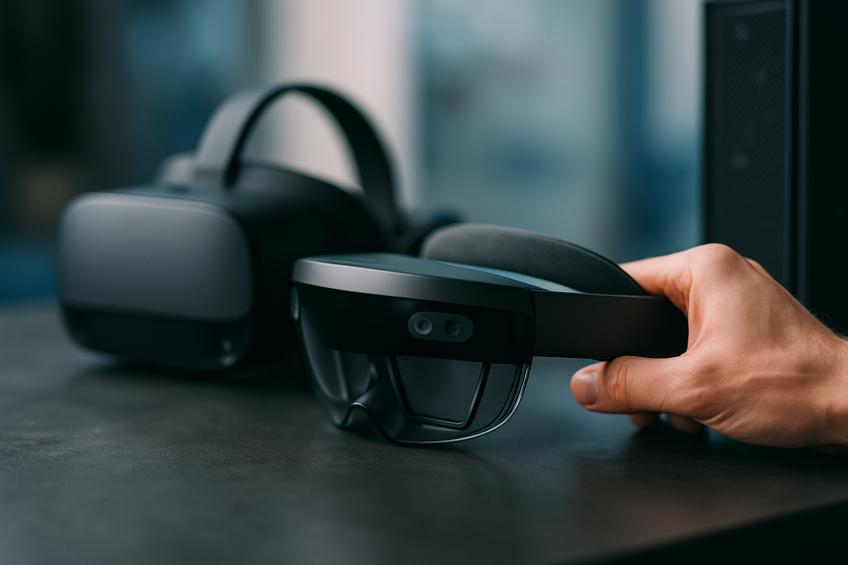Augmented Reality and Virtual Reality in IT Support
Augmented Reality (AR) and Virtual Reality (VR) are emerging technologies that are transforming IT support by providing innovative ways to deliver assistance and training. AR overlays digital information onto the real world, allowing technicians to guide users with visual aids and step-by-step instructions remotely. VR creates a fully immersive virtual environment, enabling realistic simulations for training and complex troubleshooting. As these technologies continue to develop, their role in the IT support sector is becoming increasingly significant, offering scalable solutions that align with modern business needs source.
In IT support, AR is especially valuable for remote troubleshooting and real-time guidance, making it possible to assist users anywhere without physical presence. This technology enhances the accuracy and efficiency of support by allowing IT professionals to share visual cues and instructions directly over a user's device or system. VR, on the other hand, serves as a powerful tool for immersive training, helping technicians and users practice handling technical issues in a controlled virtual space before applying solutions in the real world.
Enhancing Remote Assistance with AR and VR
Augmented Reality (AR) and Virtual Reality (VR) are dramatically transforming remote assistance by enabling immersive, interactive collaboration that enhances troubleshooting and support processes. Often referred to collectively as Extended Reality (XR), these technologies give technical experts a three-dimensional visualization of remote work environments, allowing them to guide frontline workers or customers in real time regardless of location.
The integration of AR and VR in remote assistance facilitates real-time guidance with interactive tools, such as on-screen pointers and annotations, which improve communication and reduce errors. This immersive collaboration not only accelerates issue resolution but also improves the overall efficiency and effectiveness of support teams source. Additionally, organizations can monitor assets and operational workflows remotely, identifying problems quickly and providing support that closely mimics in-person interventions.
Recent Technological Innovations in AR and VR
Recent technological innovations in augmented reality (AR) and virtual reality (VR) are significantly transforming IT support across industries by enhancing technical assistance and operational efficiency. One major advancement is the integration of ARCore 1.47.0 by Google, which now supports flashlight functionality, enabling better-quality AR experiences in low-light or dark environments.
Additionally, developments like 8th Wall's Gaussian splatting support allow developers to create more realistic and immersive 3D environments, facilitating accurate remote guidance and training experiences without physical presence source. Innovations in ARKit from Apple bring features that help devices detect and interact with real-world objects, supporting IT technicians in visualizing complex hardware setups virtually in real-time, thus reducing errors and onsite visits.
Case Studies in AR and VR Implementation
Augmented Reality (AR) and Virtual Reality (VR) technologies have been successfully implemented across various industries to enhance remote troubleshooting and support, significantly improving operational efficiency and reducing downtime.
Manufacturing: Mercedes-Benz utilizes AR/VR for field service to revolutionize remote troubleshooting, allowing technicians to share real-time visuals with experts located elsewhere, which helps in faster diagnosis and resolution of complex issues source.
Healthcare: In healthcare, AR/VR facilitates remote assistance for medical equipment troubleshooting and surgical support by guiding on-site technicians with detailed AR overlays.
Automotive: The automotive service industry uses AR for remote vehicle diagnostics and repair support, allowing even less experienced mechanics to perform complex repairs under remote expert supervision.
Challenges in Integrating AR and VR
Implementing augmented reality (AR) and virtual reality (VR) technologies in IT support offers transformative potential but comes with several challenges and key considerations. A primary concern is security. AR/VR systems often require access to sensitive corporate data and networks, exposing organizations to risks such as data breaches and unauthorized access.
Another significant hurdle is user adoption. AR/VR interfaces may be unfamiliar to many users, leading to resistance or slow acceptance. Effective training programs, intuitive design, and gradual integration can help alleviate user anxiety and encourage smoother adoption.
Technical challenges include system integration with existing IT infrastructure. AR/VR applications demand high computational power and low latency, necessitating investment in optimized solutions source. Organizations should adopt a phased deployment strategy accompanied by comprehensive risk assessments and pilot testing to overcome these obstacles.
Sources
- ABI Research - Learn about the growth forecast and capabilities of AR/VR remote assistance
- HTL - Learn more about how augmented reality is shaping the future of IT support
- ISM, Inc. - Mercedes-Benz AR/VR field service case study
- MobiDev - The rise of active mobile AR devices is forecasted to reach 1.19 billion users by 2028
- Medium - Challenges such as latency, scalability, and security are critical in AR/VR deployment





